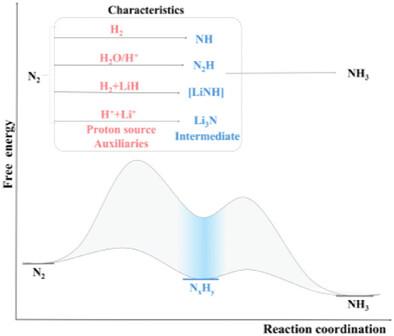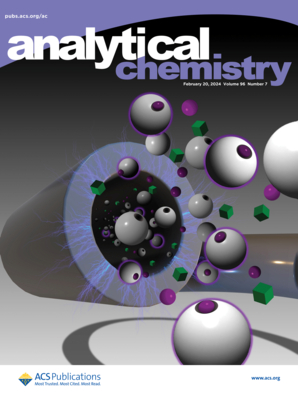The Development, Essence and Perspective of Nitrogen Reduction to Ammonia
IF 6.7
1区 化学
Q1 CHEMISTRY, ANALYTICAL
引用次数: 0
Abstract
Ammonia plays a pivotal role in agriculture and meanwhile holds promising potential as an energy vector for the hydrogen economy, where the nitrogen reduction to ammonia is a critical pathway for achieving sustainable development. Over the past hundred years, ammonia synthesis has undergone several breakthrough developments from Haber-Bosch process to photo/electro-catalysis and Li-mediated strategy, but still faces the challenges of low yield rate, selectivity and efficiency. Therefore, there is a pressing demand to develop efficient and green ammonia synthesis from nitrogen. This review summarizes the development of the nitrogen reduction to ammonia, highlighting six milestones during the whole journey. From the development direction, this work finds and extracts the essence of ammonia synthesis, that is the reaction pathways are affected by the energy barrier of reaction intermediates, which can be altered by proton sources, auxiliaries and catalysts. Then this work discusses the detailed overview of the significant development of proton source, auxiliaries and catalysts. Finally, based on the essence, the possible opportunities of ammonia synthesis from nitrogen reduction are presented, including the design of new ammonia synthesis pathways and efficient catalysts. The deep insight of nitrogen reduction to ammonia will provide a design guidance for efficient ammonia synthesis.

氮还原成氨的发展、本质和前景
氨在农业中发挥着举足轻重的作用,同时作为氢经济的能源载体,氮还原成氨是实现可持续发展的关键途径,具有广阔的发展前景。在过去的一百年中,氨合成经历了从哈伯-博施工艺到光催化/电催化以及锂介导策略的多次突破性发展,但仍然面临着产率低、选择性差和效率低的挑战。因此,开发高效、绿色的氮合成氨技术迫在眉睫。本综述总结了氮还原合成氨的发展历程,重点介绍了整个过程中的六个里程碑。从发展方向上,本研究发现并提取了氨合成的本质,即反应途径受反应中间产物能障的影响,而能障可通过质子源、辅助剂和催化剂来改变。然后,本文详细讨论了质子源、辅助剂和催化剂的重大发展概况。最后,在此基础上介绍了氮还原合成氨的可能机会,包括设计新的氨合成途径和高效催化剂。对氮还原成氨的深刻理解将为高效氨合成提供设计指导。
本文章由计算机程序翻译,如有差异,请以英文原文为准。
求助全文
约1分钟内获得全文
求助全文
来源期刊

Analytical Chemistry
化学-分析化学
CiteScore
12.10
自引率
12.20%
发文量
1949
审稿时长
1.4 months
期刊介绍:
Analytical Chemistry, a peer-reviewed research journal, focuses on disseminating new and original knowledge across all branches of analytical chemistry. Fundamental articles may explore general principles of chemical measurement science and need not directly address existing or potential analytical methodology. They can be entirely theoretical or report experimental results. Contributions may cover various phases of analytical operations, including sampling, bioanalysis, electrochemistry, mass spectrometry, microscale and nanoscale systems, environmental analysis, separations, spectroscopy, chemical reactions and selectivity, instrumentation, imaging, surface analysis, and data processing. Papers discussing known analytical methods should present a significant, original application of the method, a notable improvement, or results on an important analyte.
 求助内容:
求助内容: 应助结果提醒方式:
应助结果提醒方式:


